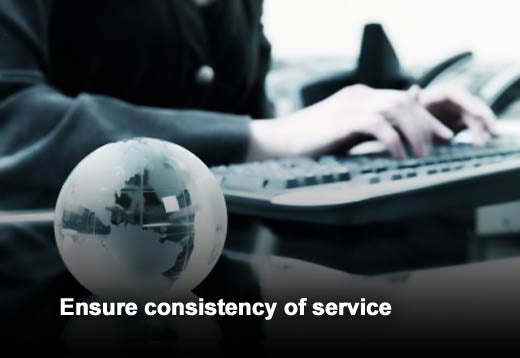Driven by the explosion in communication options and widespread customer acceptance of new digital self-service channels, the era of the traditional call center has well and truly passed. The call center is no longer the first port of call for consumers who want fast answers to simple questions.
Today’s customers are increasingly using Web, social and mobile channels as their first contact point with businesses. Virtual agent technology provider IntelliResponse offers seven tips to help customer service leaders in the contact center, not just to avert death but to become a vital part of the multi-channel customer experience.
Click through for seven tips to help customer service leaders not just avert death but become a vital part of the multi-channel customer experience, as identified by IntelliResponse.
Empower customers to answer simple questions on their own.
When customers are empowered to go online and resolve simple queries on their own, the nature of the live agent role changes completely. The live agent of the future will only engage in “high-touch, high-value” problem solving. In this environment, as call volumes go down, average handle time (AHT) may go up as complicated, high-value conversations become integral to delivering the kind of personalized live support experience that locks in customer loyalty.
Make the customer experience priority number one.
Contact center leaders must look for ways to achieve performance metrics and cost reduction without sacrificing the customer experience. Many have paid lip service to this noble pursuit, while secretly believing that the two outcomes were mutually exclusive. Enabling technologies, such as virtual agents and customer analytics, are turning the past on its head and proving that the customer experience, efficiency metrics and cost reduction can all be optimized.
Get tough on hold times and transfers.
Long hold times and repeated transfers from agent to agent hurt customer relationships and have no place in today’s contact center. Sluggish, fragmented data centers that hinder agent performance during a call need to be replaced with user-friendly knowledge management databases that allow agents to get accurate, approved answers to questions in seconds.
Simplify the live agent’s desktop.
Customer service leaders are recognizing the benefits that improving the agent experience can deliver to contact center performance. A virtual agent tool, for example, automates the entire knowledge retrieval process by allowing the customer service representative to key in a natural language question, while they have someone on the phone, and get the single right answer. Gone are the days when representatives have to sift their way through documents or search results to get the answers to the questions they receive.
Tear down old IVR barriers.
“Old school” online self-service tools like FAQ pages and site search have traditionally done a poor job of helping customers find answers. As a result, most companies rely on interactive voice response (IVR) systems to manage the resulting call volumes. Unfortunately, the endless cascade of menu options on most IVRs drives customers crazy on their quest to reach a live agent. Organizations that finally get digital self-service right will see a drastic reduction in call center volume. This will allow them to enrich the live-channel experience, by removing the frustrating old IVR barriers that were originally intended to deflect calls.
Ensure consistency of service by matching agent technology with self-service technology.
The level of sophistication available in digital self-service tools today is light years ahead of what it once was. As the caliber of digital self-service experiences continues to rise, contact centers will need to keep pace by equipping agent desktops with the very same tools and features that are being used by customers online. When agents are using the same tools to retrieve approved answers to questions, customers receive a consistent experience across all channels.
Understand the contact center’s role in the multi-channel world.
Customer service leaders need to understand how customers are actually using each channel in order to guide investment decisions that will have the greatest impact. Today’s customers tend to go to a company’s website first when looking for answers to questions. Live support channels come next. When customers call a contact center, it’s likely they have a complex question that couldn’t be answered online. For customer service representatives, this makes providing personalized, focused service more critical than ever. Smart customer service leaders will make sure their representatives are equipped to deliver high-value service and resolve complex queries quickly.










